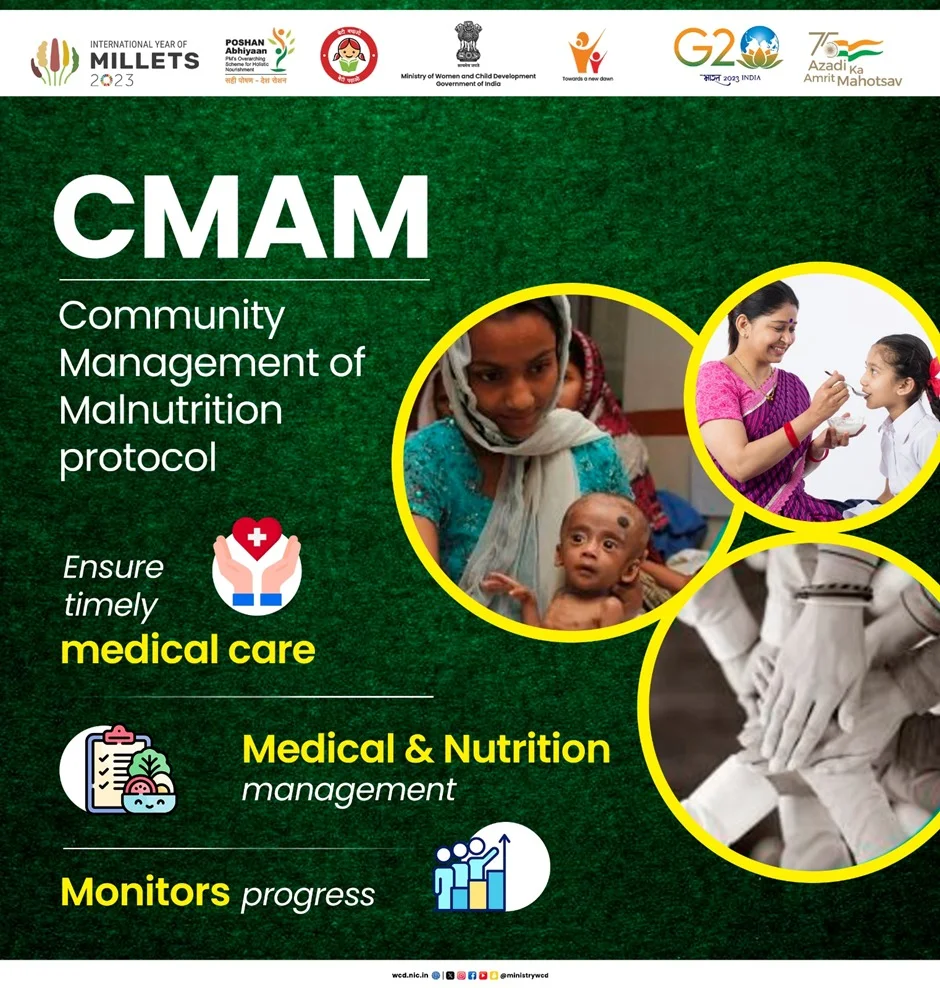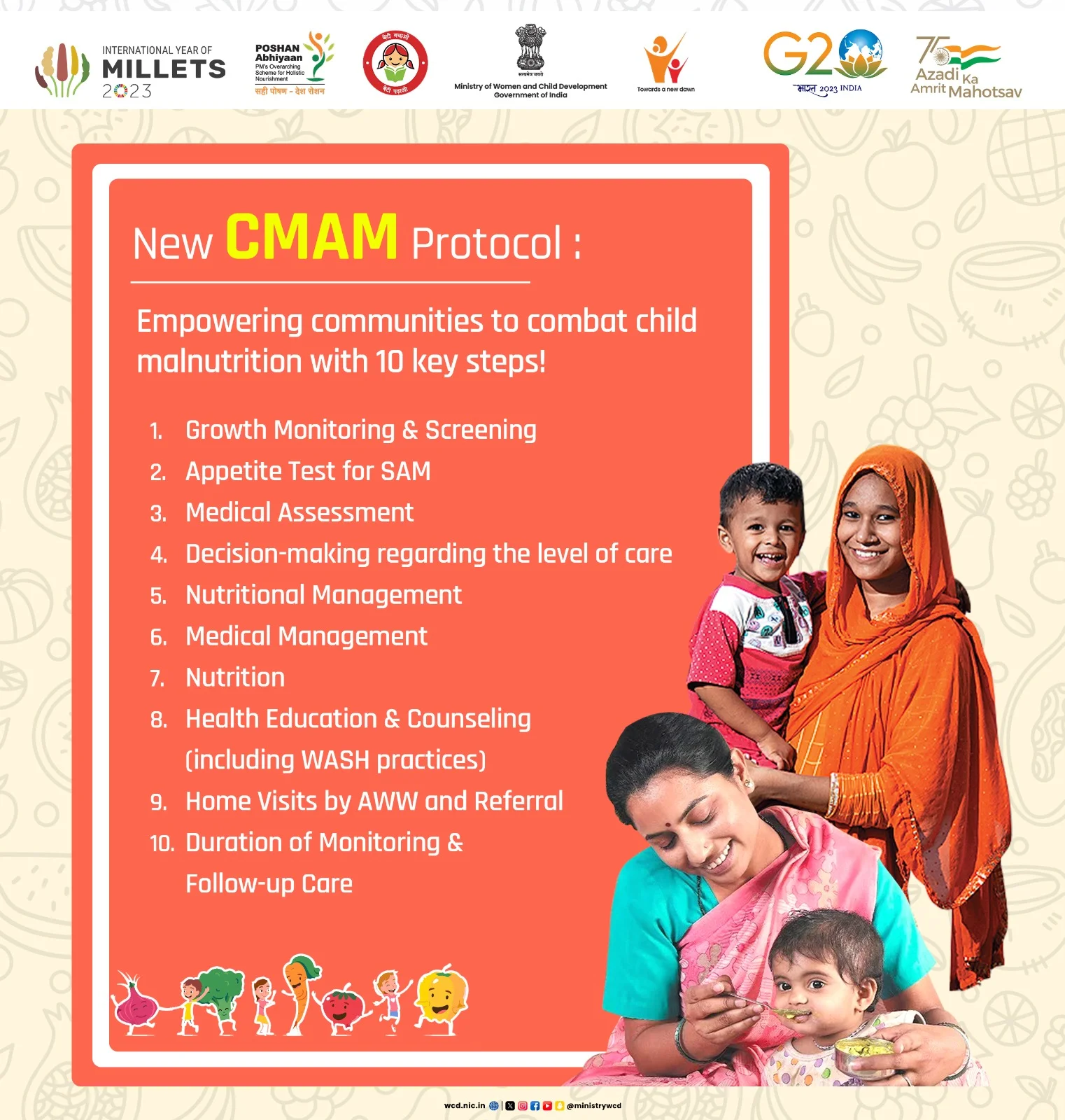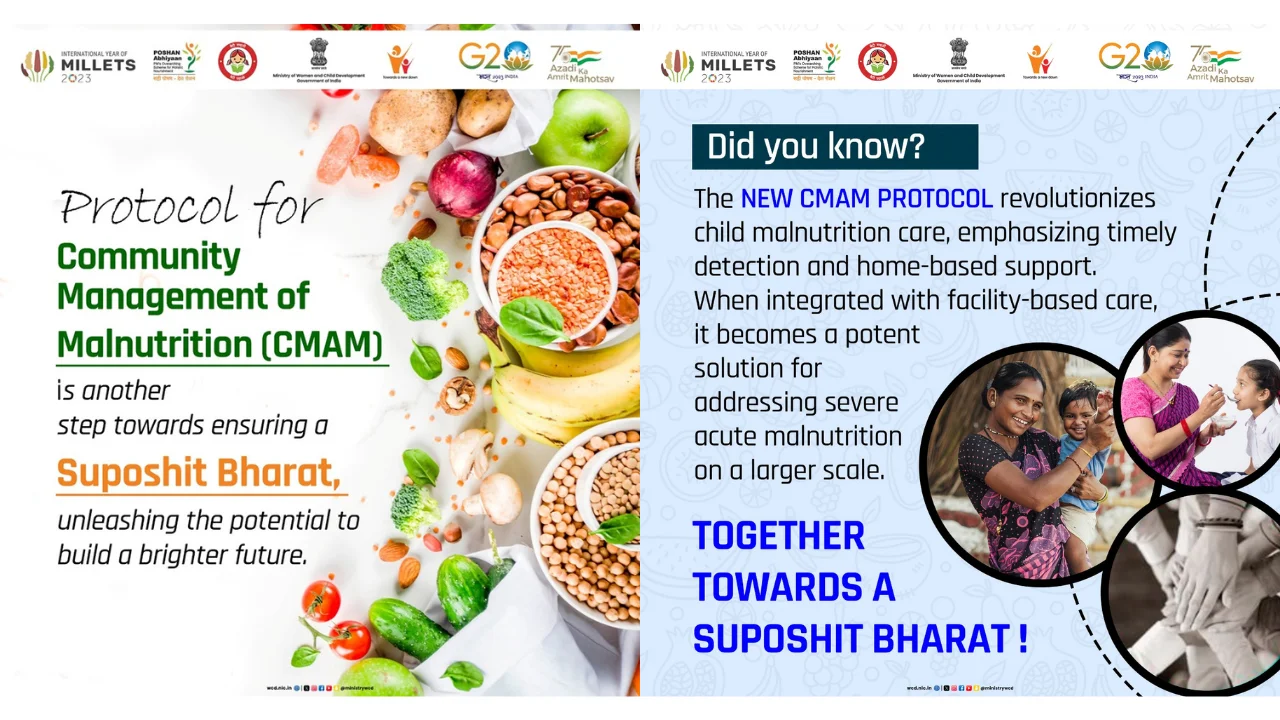The ‘Protocol for Community Management of Malnutrition in Children’ was officially introduced during a national event held at Vigyan Bhawan on October 10, 2023. The event was chaired by the Union Minister of Women and Child Development, Smt. Smriti Zubin Irani, and attended by the Minister of State for WCD and Ayush, Dr. Munjapara Mahendrabhai, as well as the Secretaries of the Ministry of Women and Child Development (MWCD) and the Ministry of Health & Family Welfare (MH&FW). This protocol is a significant step in addressing child malnutrition in the community.
What is Malnutrition?
Malnutrition is a condition that results from eating a diet that lacks essential nutrients. It can be caused by a deficiency of calories, protein, vitamins, or minerals. Malnutrition can also be caused by an inability to absorb nutrients from food.
Types of malnutrition
There are two main types of malnutrition: undernutrition and overnutrition. Undernutrition is the most common type of malnutrition and is caused by a deficiency of calories, protein, vitamins, or minerals. Overnutrition is caused by consuming too many calories, protein, or fat.
Undernutrition can lead to a number of health problems, including:
- Stunted growth
- Wasting
- Underweight
- Micronutrient deficiencies
Overnutrition can also lead to a number of health problems, including:
- Obesity
- Diabetes
- Heart disease
- Stroke
Malnutrition is a serious problem that can affect people of all ages. It is especially common in developing countries and among children.
Causes of malnutrition
There are a number of factors that can contribute to malnutrition, including:
- Poverty
- Food insecurity
- Lack of access to clean water and sanitation
- Poor hygiene
- Chronic diseases, such as HIV/AIDS and malaria
- Disasters, such as drought and conflict
Treatment for malnutrition
The treatment for malnutrition depends on the cause and the severity of the condition. In some cases, malnutrition can be treated by simply eating a more nutritious diet. In other cases, medical intervention may be necessary.
Prevention of malnutrition in children
The best way to prevent malnutrition is to eat a healthy diet and to practice good hygiene. It is also important to have access to clean water and sanitation.
About Protocol for Community Management of Malnutrition in Children
Addressing malnutrition is a complex challenge that requires coordinated efforts. The ‘Saksham Anganwadi’ and ‘Mission Poshan 2.0’ initiatives under the Ministry of Women and Child Development (MWCD) aim to combat malnutrition through a multi-sectoral approach, involving collaboration with various key ministries and departments, as well as the active participation of states and union territories.
One crucial aspect of Mission Poshan 2.0 is the identification and treatment of malnourished children. This involves identifying, treating, and managing malnourished children both at Anganwadi Centers and within communities. Knowing when to refer them to Nutritional Rehabilitation Centers (NRC) or for medical assistance is critical, highlighting the importance of close cooperation between the Ministry of Women and Child Development and the Ministry of Health and Family Welfare.


Previously, the treatment of children with Severe Acute Malnutrition (SAM) was primarily facility-based. However, a significant step has been taken with the development of a standardized national ‘Protocol for Management of Malnourished Children.’ This protocol, created by the MWCD with inputs from the MH&FW, provides detailed guidance on identifying and managing malnourished children at the Anganwadi level, including decisions regarding referral, nutritional management, and follow-up care.
- Weekly Current Affairs 2025 PDF For Bank, SSC, UPSC Exams
- Unsung Heroes of India: 10 Unknown Freedom Fighters You Should Know
- 26 December Current Affairs 2023 in English
- Daily Current Affairs 2025, Check Today’s Current Affairs
- April Month Current Affairs 2024, Download PDF
- June Month Current Affairs 2024, Download PDF

Hello, I’m Aditi, the creative mind behind the words at Oliveboard. As a content writer specializing in state-level exams, my mission is to unravel the complexities of exam information, ensuring aspiring candidates find clarity and confidence. Having walked the path of an aspirant myself, I bring a unique perspective to my work, crafting accessible content on Exam Notifications, Admit Cards, and Results.
At Oliveboard, I play a crucial role in empowering candidates throughout their exam journey. My dedication lies in making the seemingly daunting process not only understandable but also rewarding. Join me as I break down barriers in exam preparation, providing timely insights and valuable resources. Let’s navigate the path to success together, one well-informed step at a time.






